The design of realistic objects in Adobe Illustrator can be challenging, especially when it comes to depicting materials and light. In this guide, I will show you how to add more depth to the loop in Illustrator through two basic techniques that utilize the play of light and shadow. With a little creativity, you will be able to achieve impressive results.
Main insights
- Shadows and highlights are crucial for the plasticity of your designs.
- The use of gradients can enhance the visual impression.
- Tools like the smoothing tool help optimize your shapes.
Step-by-step guide
First, we start by locking the lower shadow layer to avoid unintended adjustments. You can undo this at any time if you want to make changes. This makes your work more effective and helps you focus better here.
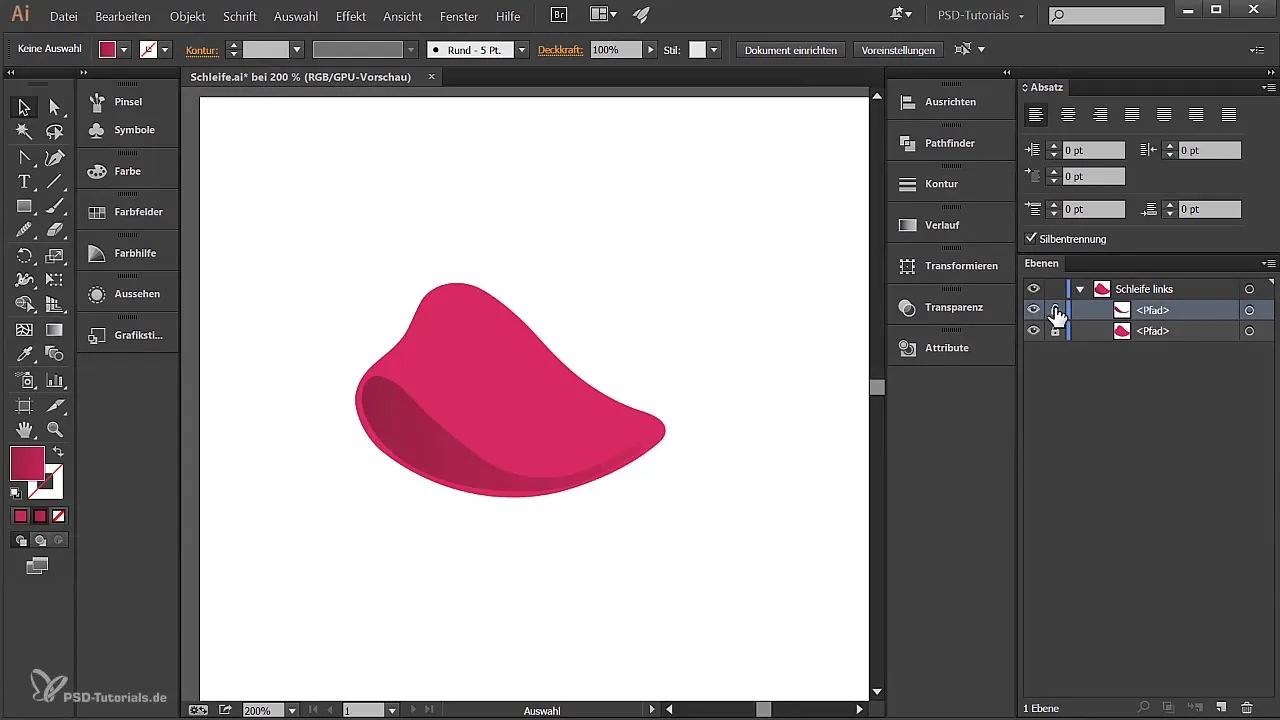
To create the first shadow, select the pencil tool and choose a color, such as a light gray. This will create the illusion that the loop looks realistically knotted.
You place the first point of the shadow and then draw an arc, which you eventually close. This arc is crucial for creating the impression of depth. Perhaps you are not completely satisfied with the gradient yet. In this case, you can select the anchor points and adjust them to perfect the shape.
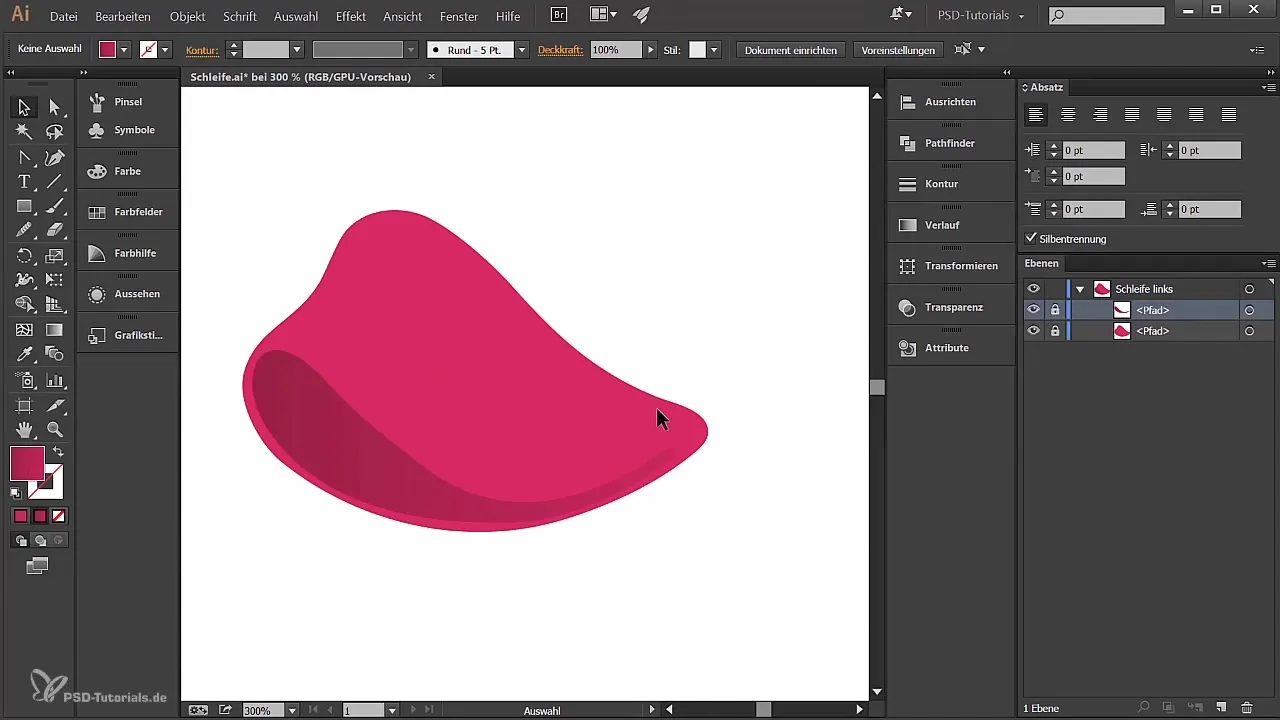
When you are happy with the shape, the next step is to create a gradient. For this, choose a linear gradient. The gradient should have RGB values of 184, 26, 81 on the left side and 143, 13, 63 on the right side to create a harmonious transition.
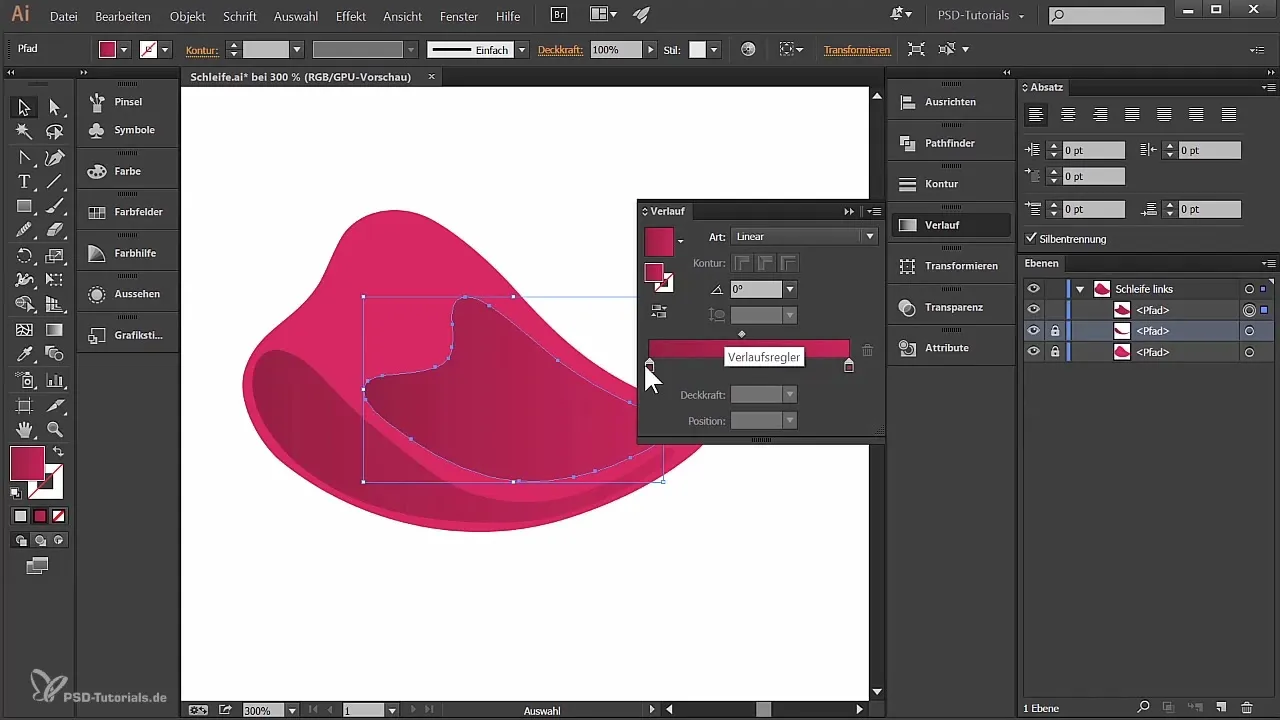
At the moment, the gradient might still be too strong. Reduce the opacity in the transparency palette to about 50% to make the shadow appear softer and more natural.
After you have created the first shadow, lock this shape again. Now, create the second shadow, which should be narrower and darker. Start in a similar way as before and adjust the anchor points as needed.
You will again set a gradient for this shadow. This time, the left RGB values should be set to 184, 26, 81 with an opacity of 0%, and the right to 143, 13, 63 at 100%.
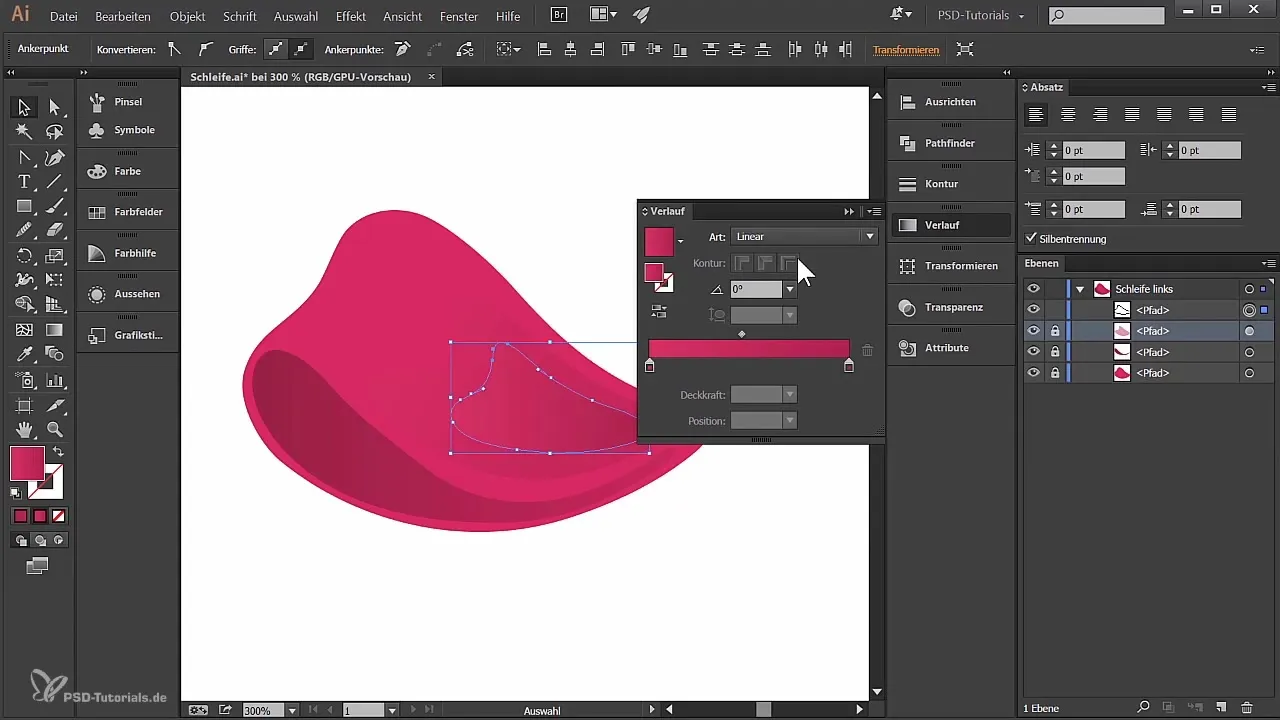
Here, you can also adjust the gradient so that it gives the impression that the loop is rounded at the edges.
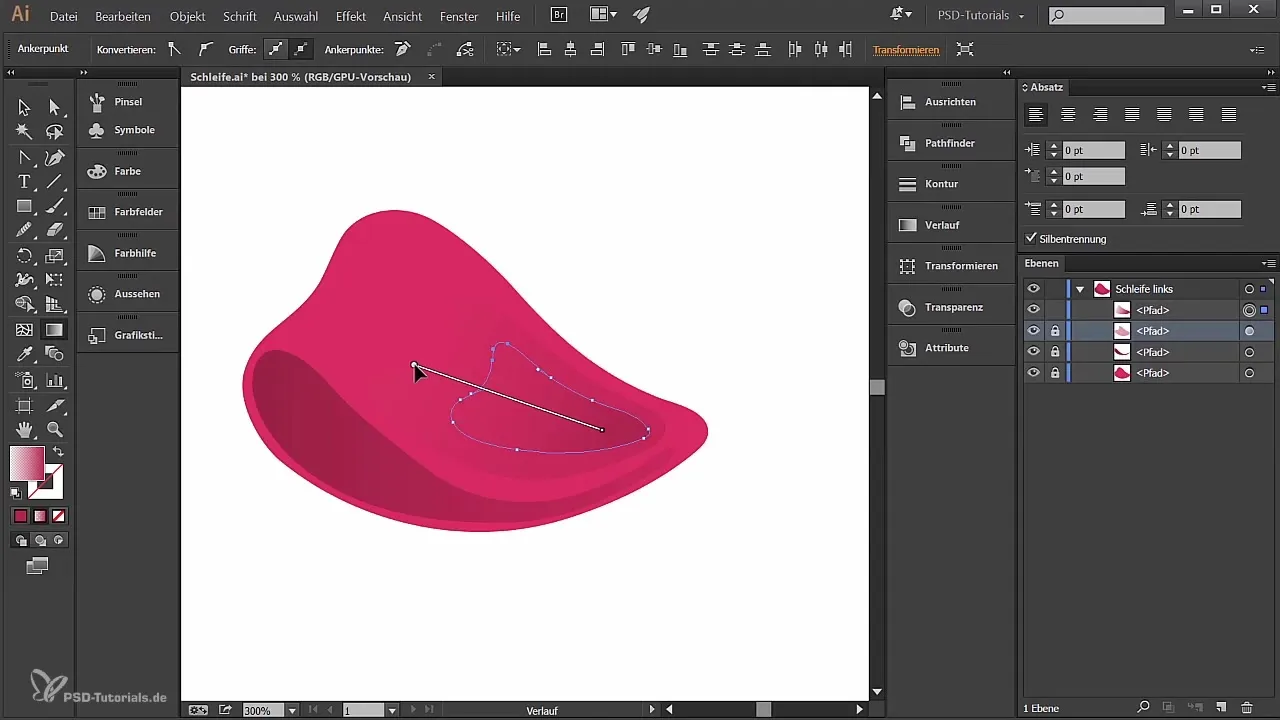
Now we come to the highlight, which adds even more depth to the loop. Again, select the pencil tool and draw a shape that shows where the light hits the loop.
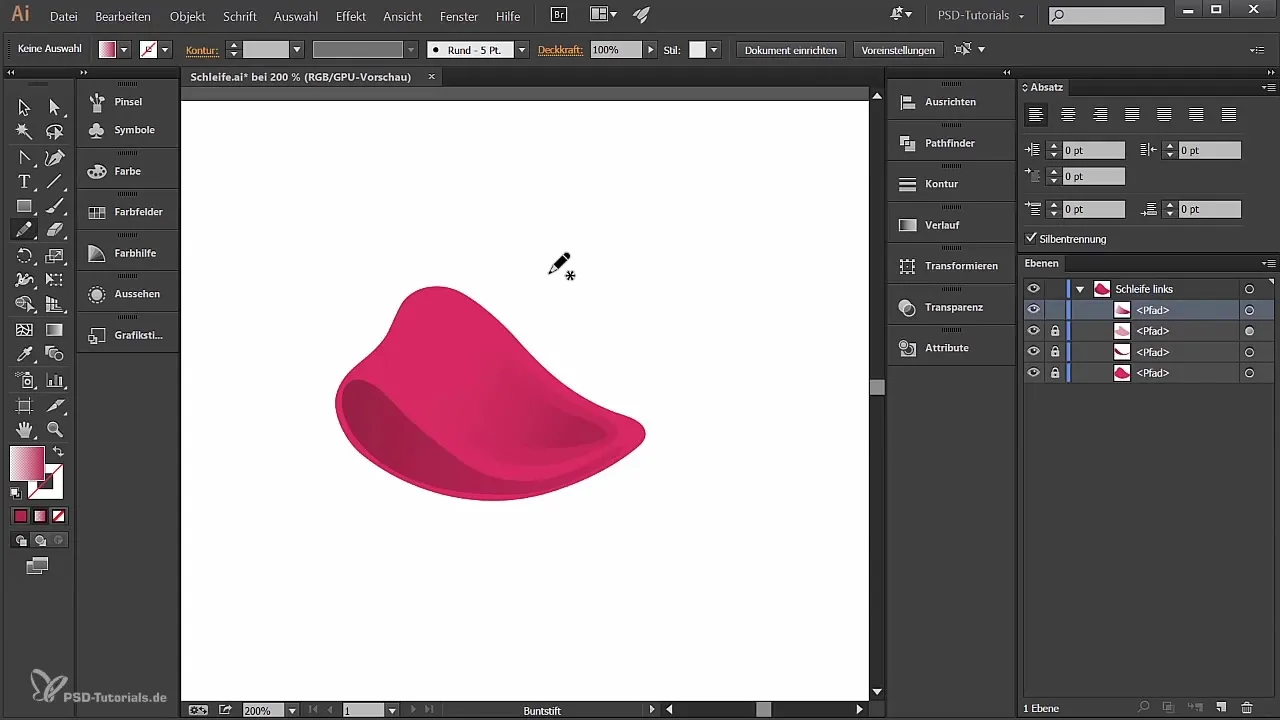
To give the highlight more dynamism, you can again use the smoothing tool. This will help your shape appear a bit more lively.
The next step is to give the highlight a fill. Use a linear gradient with shades of white, where the middle handles should have an opacity of 100% and the outer ones should have 0% to create the illusion of light.
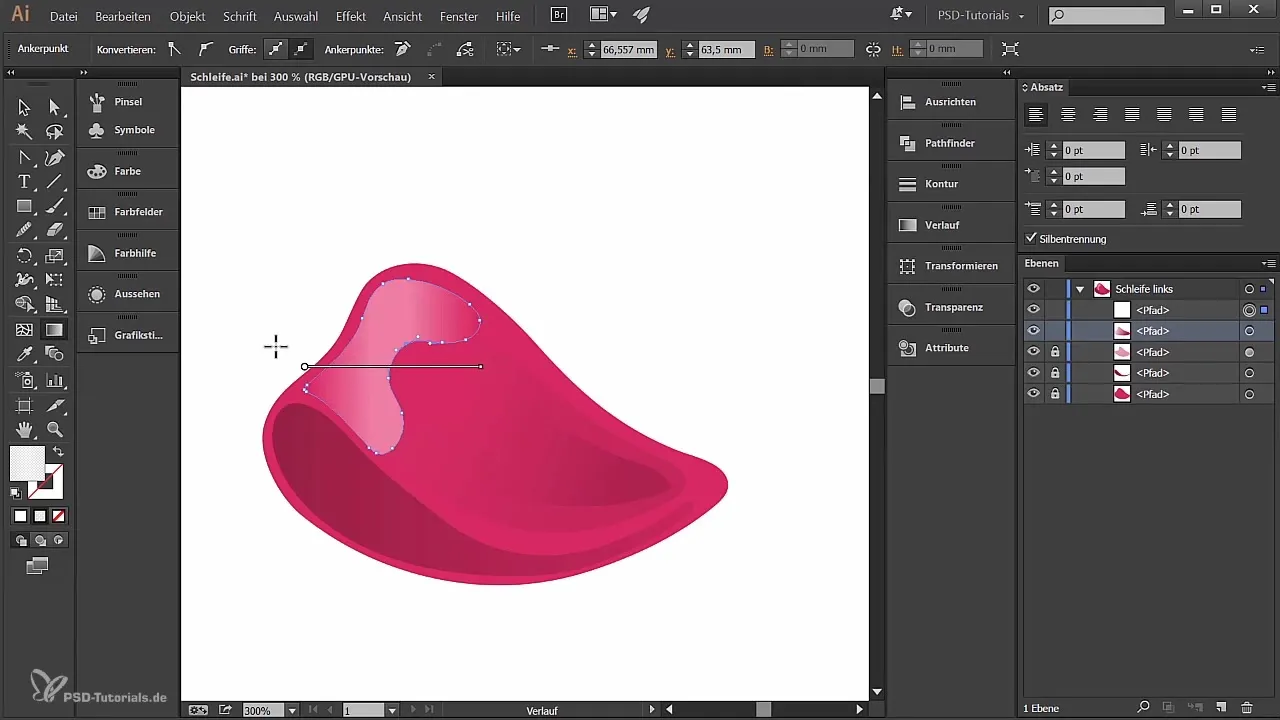
The gradient should then be rotated and adjusted to harmonize with the loop.
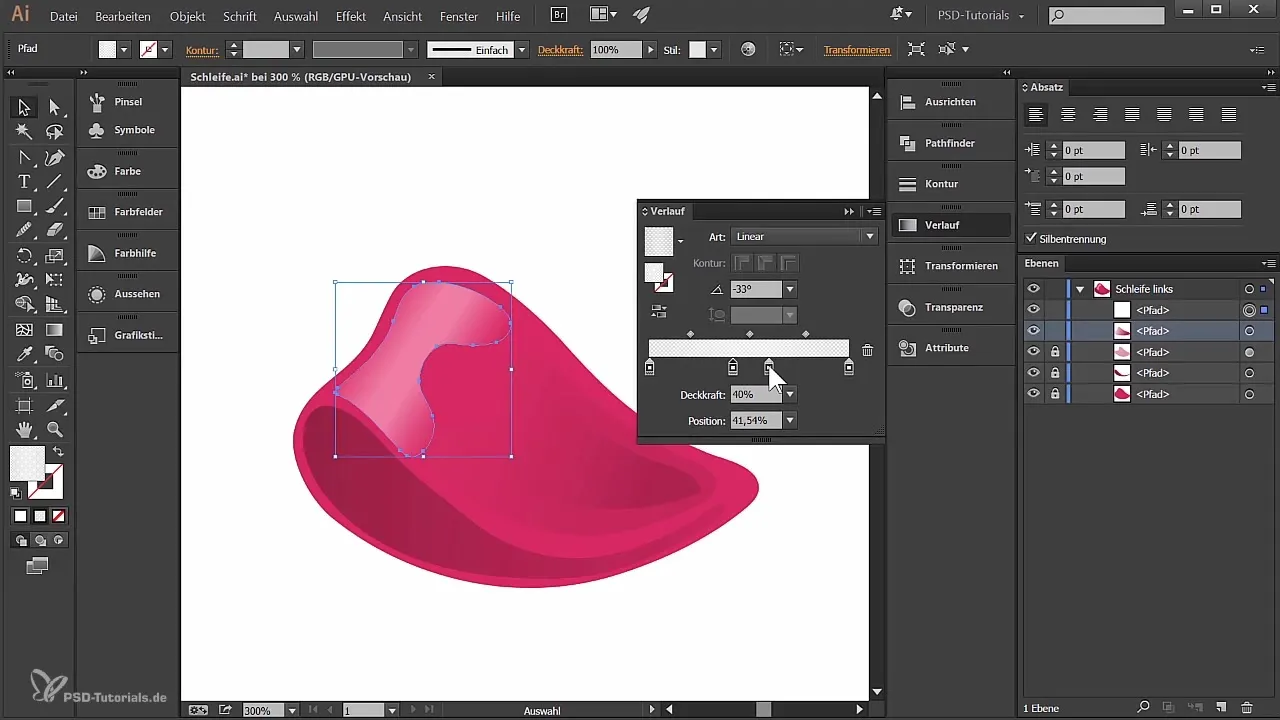
Now we have almost created all the elements for the loop. Only the final round is missing: the band that connects the loop, as well as the knot with the finishing detail that gives your loop the final touch.
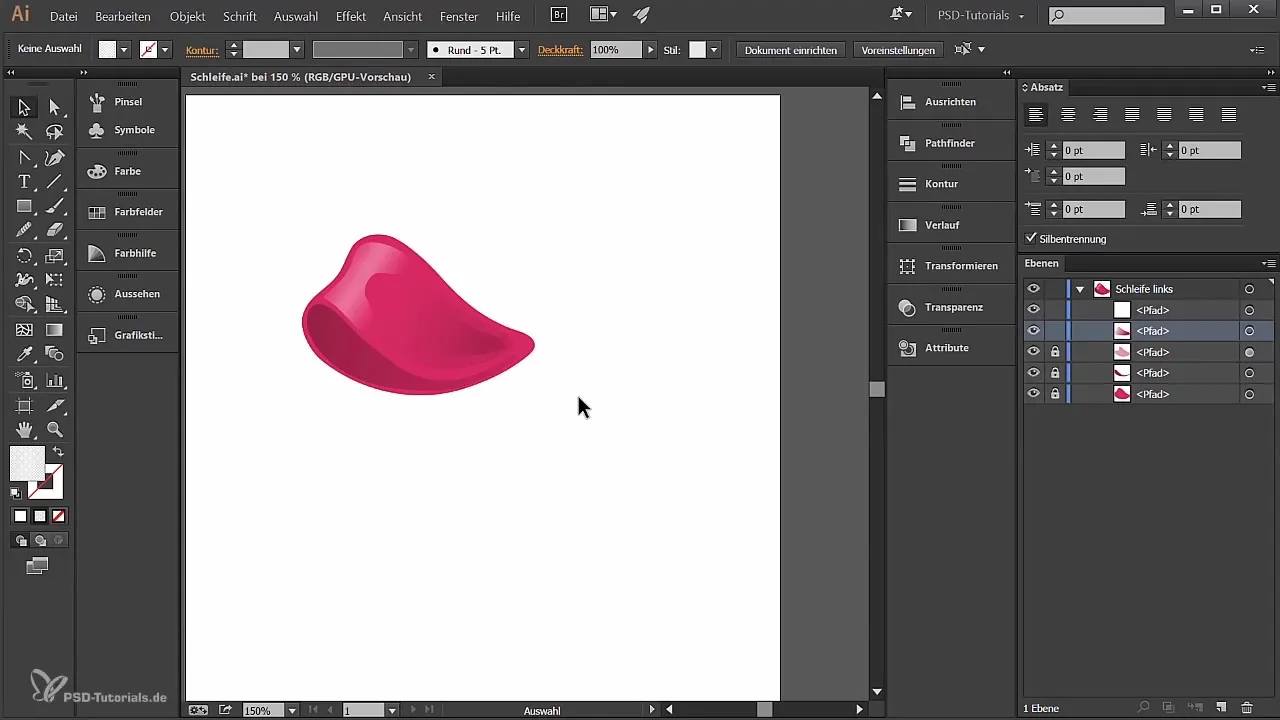
Summary – Designing a loop in Illustrator: Adding shadows and highlights
Creating a loop in Adobe Illustrator requires a proper understanding of light and shadow. Through targeted gradients and the use of simple tools, you can give your loop a realistic depth that makes it appear lifelike. With a little practice and experimentation, you will be able to effectively use these techniques and improve your designs.
Frequently asked questions
How can I adjust the opacity of a shape?You can adjust the opacity of a shape in the transparency palette, which you can find under the "Window" menu.
Do I need special tools for shadow and highlight effects?The standard tools from Adobe Illustrator are sufficient, especially the pencil and smoothing tool.
Can I adjust gradients after I've created them?Yes, you can adjust and change gradients at any time while in selection mode.
How do I save my project to avoid losing changes?Regularly save your project with "File" > "Save" to secure your work.


